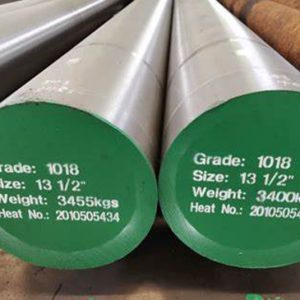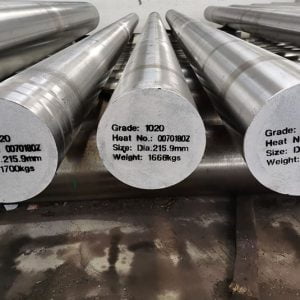Introduction
1018 steel is a low-carbon steel known for its excellent weldability, machinability, and strength. It is widely used in various industries, including construction, automotive, and manufacturing. However, finding equivalent grades to 1018 steel can be essential for various reasons, such as availability, cost, and specific project requirements. This comprehensive guide will delve into the various 1018 steel equivalent grades, exploring their properties, applications, and benefits. By understanding these equivalents, you can make informed decisions for your projects and ensure optimal performance and efficiency.
What is 1018 Steel?

Definition and Composition
1018 steel is a type of low-carbon steel that contains approximately 0.18% carbon, along with small amounts of other elements like manganese, phosphorus, and sulfur. Its composition gives it a good balance of strength, ductility, and toughness, making it suitable for various applications.
- Carbon Content: Approximately 0.18%
- Manganese: 0.60-0.90%
- Phosphorus: ≤ 0.04%
- Sulfur: ≤ 0.05%
Key Properties
- Weldability: Excellent
- Machinability: Good
- Tensile Strength: Approximately 440 MPa
- Yield Strength: Approximately 370 MPa
- Elongation: 15-20%
Why Consider 1018 Steel Equivalents?
Availability and Cost
Depending on your location and specific project needs, 1018 steel may not always be readily available or cost-effective. Knowing equivalent grades can help you find alternatives that meet your requirements.
- Cost Savings: Choosing a more cost-effective equivalent can reduce project expenses.
- Availability: Ensures that you can source materials without delays.
Specific Project Requirements
Certain projects may require materials with slightly different properties than those offered by 1018 steel. Equivalent grades can provide variations in properties that better suit specific applications.
- Tailored Properties: Find materials with properties that match specific project needs.
- Performance Optimization: Use the best-suited material for enhanced performance.
1018 Steel Equivalent Grades
AISI 1020 Steel
Overview
AISI 1020 steel is a low-carbon steel similar to 1018 but with slightly higher carbon content. It offers good machinability, weldability, and strength, making it a common equivalent to 1018 steel.
- Carbon Content: Approximately 0.20%
- Tensile Strength: Approximately 420 MPa
- Yield Strength: Approximately 350 MPa
Applications
- Automotive Components: Gears, shafts, and fasteners
- Construction: Structural components and supports
- Manufacturing: Machinery parts and equipment
ASTM A36 Steel
Overview
ASTM A36 is a standard specification for carbon structural steel. It is widely used in construction and offers good weldability, machinability, and strength. ASTM A36 is often considered an equivalent to 1018 steel for structural applications.
- Carbon Content: Approximately 0.25%
- Tensile Strength: Approximately 400-550 MPa
- Yield Strength: Approximately 250 MPa
Applications
- Construction: Beams, columns, and bridges
- Manufacturing: Structural components and frames
- Automotive: Chassis and frame parts
EN3B Steel (European Equivalent)
Overview
EN3B is a low-carbon steel that is widely used in Europe. It offers good machinability and weldability, making it an excellent equivalent to 1018 steel.
- Carbon Content: Approximately 0.15-0.25%
- Tensile Strength: Approximately 430-510 MPa
- Yield Strength: Approximately 270-370 MPa
Applications
- Machinery Parts: Gears, shafts, and bolts
- Construction: Structural components
- General Engineering: Various fabricated parts
C15 Steel (ISO Equivalent)
Overview
C15 steel is a low-carbon steel according to ISO standards. It shares many properties with 1018 steel, including good weldability and machinability.
- Carbon Content: Approximately 0.12-0.18%
- Tensile Strength: Approximately 420-510 MPa
- Yield Strength: Approximately 250-350 MPa
Applications
- Automotive: Engine components and fasteners
- Construction: Structural parts
- Manufacturing: Tools and machinery parts
S15C Steel (JIS Equivalent)
Overview
S15C is a low-carbon steel according to Japanese Industrial Standards (JIS). It is similar to 1018 steel and is commonly used in automotive and construction applications.
- Carbon Content: Approximately 0.15%
- Tensile Strength: Approximately 400-510 MPa
- Yield Strength: Approximately 250-350 MPa
Applications
- Automotive: Engine parts and gears
- Construction: Structural components
- General Engineering: Various fabricated parts
Table: Comparison of 1018 Steel Equivalents
| Steel Grade | Standard | Carbon Content (%) | Tensile Strength (MPa) | Yield Strength (MPa) | Applications |
|---|---|---|---|---|---|
| 1018 | AISI | 0.18 | 440 | 370 | General engineering, automotive, construction |
| 1020 | AISI | 0.20 | 420 | 350 | Automotive components, structural supports |
| A36 | ASTM | 0.25 | 400-550 | 250 | Construction, manufacturing, automotive |
| EN3B | European | 0.15-0.25 | 430-510 | 270-370 | Machinery parts, structural components |
| C15 | ISO | 0.12-0.18 | 420-510 | 250-350 | Automotive, construction, manufacturing |
| S15C | JIS | 0.15 | 400-510 | 250-350 | Automotive, construction, general engineering |
Applications of 1018 Steel Equivalents

Automotive Industry
Engine Components
1018 steel equivalents like AISI 1020 and S15C are commonly used for engine components due to their good machinability and strength.
- Engine Parts: Shafts, gears, and fasteners
- Benefits: High strength, durability, and ease of manufacturing
Chassis and Frames
ASTM A36 is widely used for automotive chassis and frame components, providing the necessary strength and weldability for structural integrity.
- Chassis: Structural supports and reinforcements
- Frames: Vehicle frames and subframes
Construction Industry
Structural Components
1018 steel equivalents like ASTM A36 and EN3B are commonly used for structural components in construction due to their excellent weldability and strength.
- Beams and Columns: Structural supports for buildings and bridges
- Reinforcements: Reinforcing bars and plates
Infrastructure Projects
The versatility of 1018 steel equivalents makes them ideal for various infrastructure projects, including bridges, roads, and tunnels.
- Bridges: Structural components and supports
- Tunnels: Reinforcements and supports
Manufacturing Industry
Machinery Parts
1018 steel equivalents like C15 and EN3B are widely used in manufacturing machinery parts due to their machinability and strength.
- Gears and Shafts: Precision-machined components
- Bolts and Fasteners: High-strength fastening solutions
Tools and Equipment
The durability and machinability of 1018 steel equivalents make them suitable for manufacturing tools and equipment.
- Hand Tools: Wrenches, pliers, and screwdrivers
- Industrial Equipment: Machine parts and components
Conclusion
Understanding the various 1018 steel equivalent grades is essential for selecting the right material for your specific applications. Whether you are working in the automotive, construction, or manufacturing industries, knowing the properties and benefits of these equivalents can help you make informed decisions and ensure optimal performance. By choosing the appropriate 1018 steel equivalent, you can achieve the desired balance of strength, machinability, and cost-effectiveness for your projects.
FAQ
What is the carbon content of 1018 steel?
The carbon content of 1018 steel is approximately 0.18%. This low carbon content gives it good weldability and machinability while maintaining adequate strength and toughness.
How does AISI 1020 compare to 1018 steel?
AISI 1020 steel is similar to 1018 steel but has a slightly higher carbon content of approximately 0.20%. This results in comparable strength and machinability, making it a common equivalent for 1018 steel in various applications.
Why is ASTM A36 considered an equivalent to 1018 steel?
ASTM A36 is considered an equivalent to 1018 steel for structural applications because of its similar strength and weldability. While A36 has a slightly higher carbon content (approximately 0.25%), it offers excellent performance in construction and manufacturing.
What are the common applications of EN3B steel?
EN3B steel, a European equivalent to 1018 steel, is commonly used in machinery parts, structural components, and general engineering applications. Its good machinability and weldability make it suitable for a wide range of uses.
How does S15C steel compare to 1018 steel?
S15C steel, according to Japanese Industrial Standards (JIS), is a low-carbon steel similar to
- It offers comparable tensile and yield strength, making it suitable for automotive and construction applications.
What are the benefits of using C15 steel in manufacturing?
C15 steel, an ISO equivalent to 1018 steel, provides good machinability and strength. Its benefits include ease of manufacturing, high durability, and suitability for automotive, construction, and general engineering applications.
How does the tensile strength of 1018 steel compare to its equivalents?
The tensile strength of 1018 steel is approximately 440 MPa. Its equivalents, such as AISI 1020, ASTM A36, EN3B, C15, and S15C, have comparable tensile strengths, ranging from 400 to 550 MPa, depending on the specific grade and standard.
Why is weldability important in choosing a 1018 steel equivalent?
Weldability is crucial because it determines how easily the steel can be welded without compromising its structural integrity. Good weldability ensures that the steel can be used in various applications, including construction and automotive, where welding is a common practice.
What factors should be considered when selecting a 1018 steel equivalent?
When selecting a 1018 steel equivalent, consider factors such as carbon content, tensile and yield strength, weldability, machinability, and specific project requirements. These factors will help you choose the best material for your application.
How do 1018 steel equivalents benefit the automotive industry?
1018 steel equivalents benefit the automotive industry by providing materials with good machinability, strength, and weldability. These properties are essential for manufacturing engine components, chassis, frames, and other structural parts, ensuring durability and performance in automotive applications.





